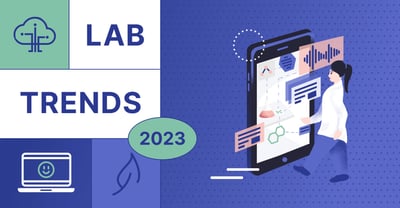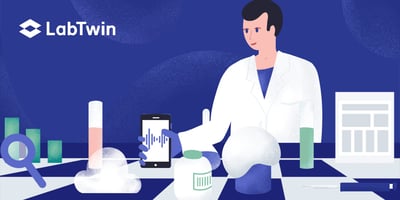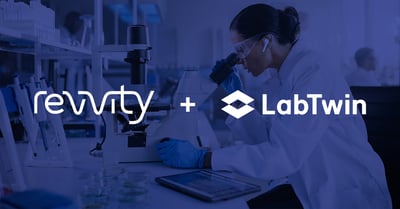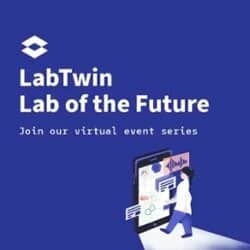So far, 2023 is shaping up to be the year of sustainability in terms of life science trend, with labs mindful of reducing their costs and minimizing their impact on the environment. Both of these goals can be achieved through laboratory digitalization, which streamlines operations management, facilitates waste reduction, and minimizes equipment down-time. Instant access to digital data on lab operations can provide real-time insights into inefficiencies and highlight areas for improvement, thus reducing waste and improving productivity.
However, with COVID-associated lockdowns and social distancing still fresh on everyone’s mind, 2023 has also brought a stronger focus on caring for individuals, attracting and retaining talent, and having flexible workplace solutions that can be self-tailored to different use-cases. We will continue to see labs use digitalization and cutting-edge lab technology to create more flexible and attractive working environments.
Although digitalization has already started to take root in many organizations, this is still often in the form of point-to-point solutions, with digital islands and isolated automation. This year, we will see more life science and chemical organizations leverage newer digital technologies to create end-to-end digital workflows and automate experimental execution.
We see three main digitalization trends emerging in 2023:
1. Sustainability
2. User-centered design
3. Interoperability
By adopting these trends, laboratories can reduce their environmental impact while improving their efficiency, attract and retain talent, and get the most value out of their data. In this blog post, we'll explore each of these trends in more detail and discuss how they are shaping the future of laboratory digitalization and laboratory technology.
Trend 1: Sustainability
If sustainability has been a buzz word in recent years, it is now becoming a concrete plan of action for many labs as we are entering another year of painful inflation. Combined with a rising consciousness of the negative environmental impact of certain lab activities, more R&D labs will be looking for ways to reduce their carbon footprint and minimize their waste.
“One of the biggest challenges for us within my sector is looking at how we can become more sustainable and continue to do our work effectively into the future. We are looking at how we can maintain our regulatory obligations whilst reducing our energy use and increasing our efficiency.” Vice President Chemical R&D, Top10 Pharma
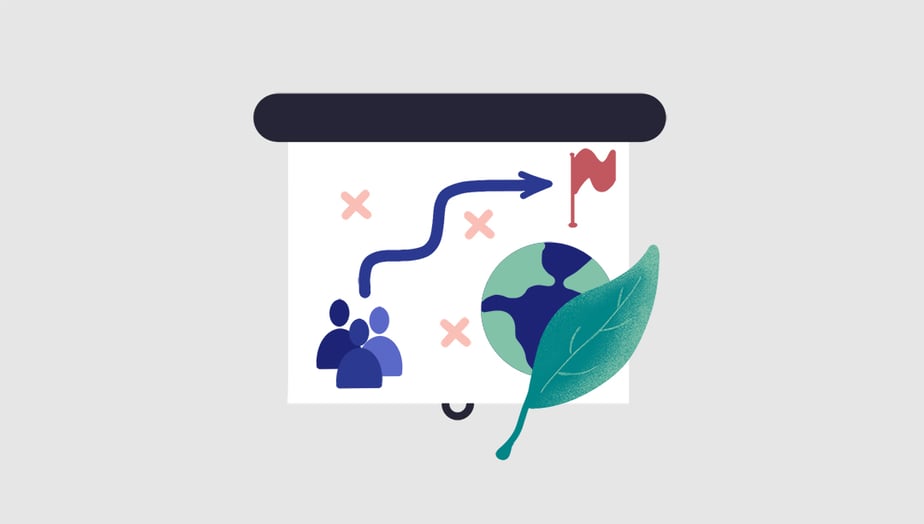
In 2023, we are seeing labs improve their efficiency and sustainability through lab digitalization, which facilitates operations management, waste reduction, and optimized use of lab equipment. Digitalization will play a key role in enabling laboratories to streamline workflows and reduce waste by providing real-time insights on operational inefficiencies. With the increasing availability of data on laboratory operations, organizations can identify areas where they are wasting resources or where processes are inefficient. Labs will use these data to make changes that reduce waste, save time, lower costs, and improve efficiency.
LabTwin captures data from scientists at the bench and connects with lab databases to provide a precise real-time overview of how equipment, devices, and consumables are used in the lab. LabTwin automatically digitizes data, enriches it with metadata and automatically processes it, highlighting any deviations or sources of error. By providing a holistic, centralized source of lab research and development (R&D) and operations data, LabTwin allows organizations to improve productivity and maximize data use.
Trend 2: User-Centered Design
Implementing digital solutions is the first step towards digitalization. However, the second challenge is adoption. One of the best ways to improve digital adoption is by choosing user-friendly digital solutions with a single intuitive interface. This common interface should be easy to use but also allow for some self-customization that can be personalized to the needs of individual users and their use-cases. Digital tools should also offer virtual onboarding and connectivity so users can access their data from multiple locations.
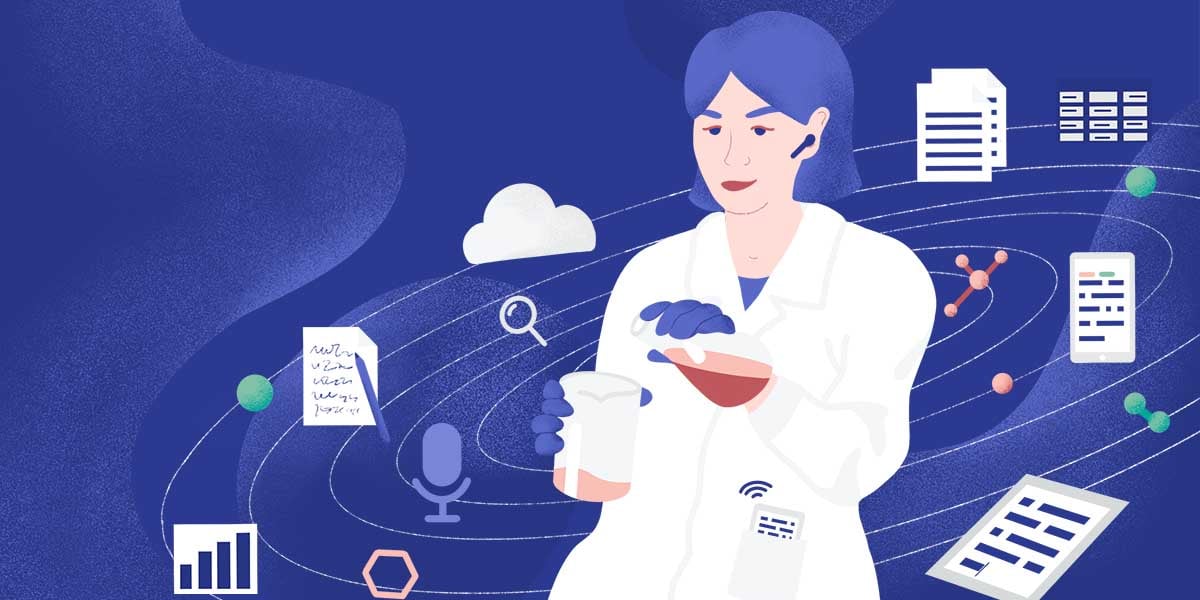
Moreover, it has become a global challenge to attract and retain talent, as younger generations are less likely to stay in a job that does not fulfill their expectations. In 2023, we will see more laboratories implement modern user-focused digital solutions to attract top talent, streamline workflows, and minimize boring, repetitive tasks.
“We are looking to combine 40 platforms into one single-use platform so it’s user friendly and fit-for-purpose for everyone. We also want it customized so all departments can use it and transform the way they work. Most importantly, we want everything on one platform so everyone can access all information they require.”, Sr. Director R&D Lab Operations, Top50 Biotech
At LabTwin, we whole-heartedly support user-centric design. From the very beginning, we made sure that our digital lab assistant has an easy-to-use interface for quick and easy digital adoption at the bench. Our digital assistant is mobile and integrates with existing lab equipment and databases to provide a single, modern, user-friendly tool that scientists and managers can use as a human-machine interface to access all their data and workflows. It provides both the flexibility needed by the scientists to work at the bench on their diverse use-cases and the structure to guide the workflows and organize the data accordingly.
Trend 3: Interoperability
Over the past few years, we have seen more and more labs start to embrace lab digitalization. The transformation of paper-based documentation to digital data management solutions has made it easier to collect, share, and analyze data, and has also improved data security, traceability, and regulatory compliance.
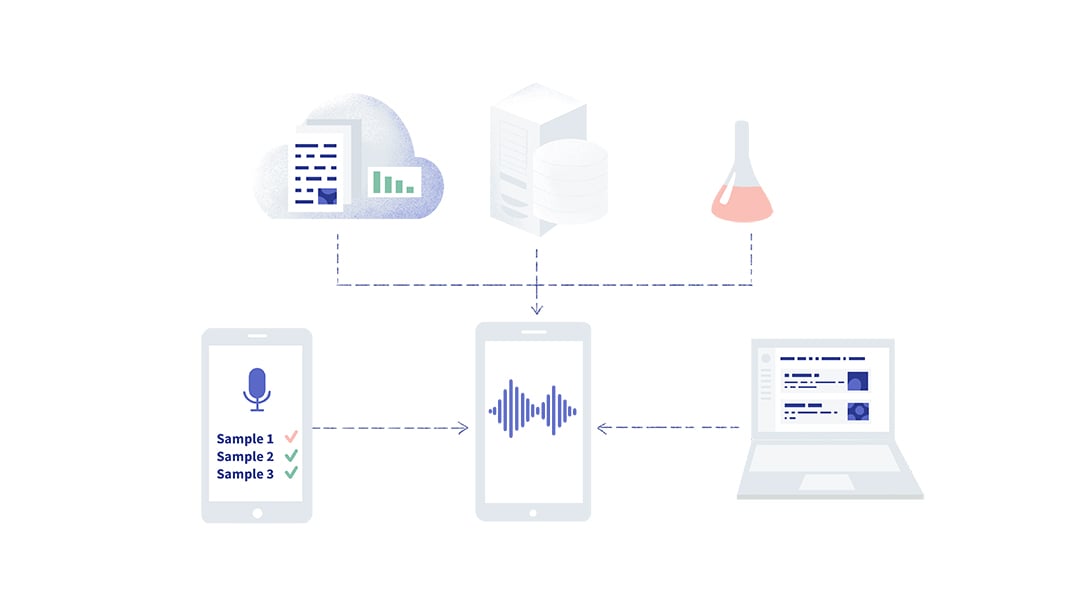
But it is still an ongoing process. For many labs, digitalization is still essentially a series of point-to-point solutions, with digital islands and minimal or isolated automation. In 2023, there will be a strong focus on interoperability, which is the ability of digital technologies to work together seamlessly across different organizations and systems. Labs will transform their digital ecosystems from point-to-point solutions into one unified solution with a single user-friendly interface allowing users to control all connected lab equipment, instruments, and databases. This will facilitate automation of entire workflows, reducing human error and allowing scientists to set up and monitor experiments remotely.
Interoperability is particularly important for laboratories that outsource work to contract research organizations (CROs) or other partners and, therefore, need to transfer data quickly and efficiently between different systems and integrate it in a standard format. Interoperability will also be important within the organization, to transfer data between R&D and good manufacturing practice (GxP) departments to speed up drug development and start clinical trials faster.
“Our goal is to accelerate the transition from R&D to GXP regulated areas. Each lab has their own system and interface which gathers data from various different places and we are looking into integrating those different vendor solutions so they can talk with each other.“ Director Global Digitalisation Business Management, Top50 Biotech Company
One of the primary ways in which interoperability can be achieved is by connecting lab informatics through the use of application programming interfaces (APIs). APIs allow different digital technologies to communicate with each other and exchange data seamlessly, regardless of the programming language or platform. By selecting technologies with open APIs, laboratories can ensure that their digital technologies work together seamlessly and that data is transferred quickly and efficiently between different systems.
Another way in which interoperability can be achieved is through the adoption of common standards. Common standards ensure that digital technologies can communicate with each other using a common language, making it easier for laboratories to transfer and integrate data between different systems.
LabTwin acts as a central hub connecting different information management systems with the scientist in the lab. LabTwin’s digital lab assistant uses its open APIs to integrate with any proprietary electronic lab notebooks (ELNs) and laboratory information management systems (LIMS) or database. LabTwin automatically collects data and metadata, automatically structures the data in user-friendly templates and uploads data onto the cloud or directly in the dedicated repository system so the data are available in real time for transfer or analysis.
Conclusion
While 2022 was the year of artificial intelligence as the buzz around ChatGPT, Stable Diffusion and other breakthroughs as confirmed it, the focus on 2023 is on better lab digitalization with user-friendly digital tools to improve lab sustainability by reducing waste and improving productivity. Labs will expect their digital tools to integrate into a connected lab ecosystem and offer a single, simple interface that can be customized to the needs of individual users and use-cases. Labs will use these modern digital tools to attract and retain talent by minimizing boring, repetitive tasks and building more flexible workplace solutions.
Check the demo video and get a tailored introduction with one of our digital strategy expert to learn more about how LabTwin can you help build your Lab of the Future.


